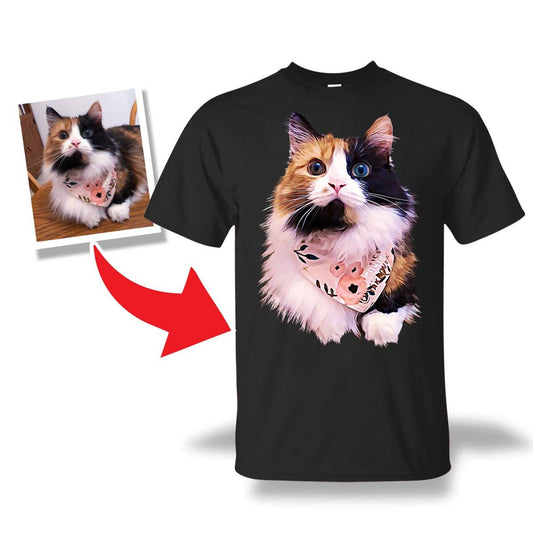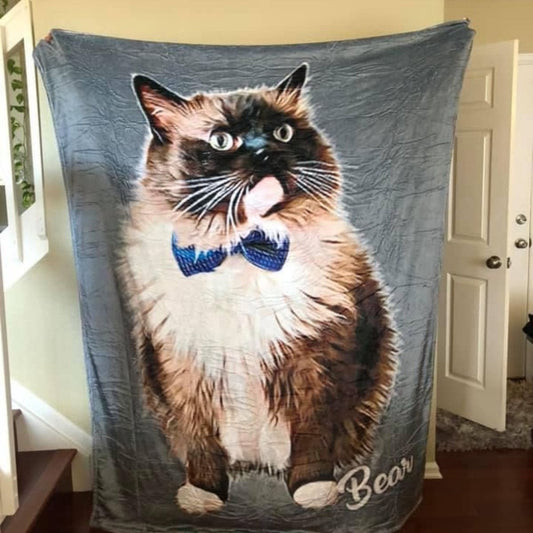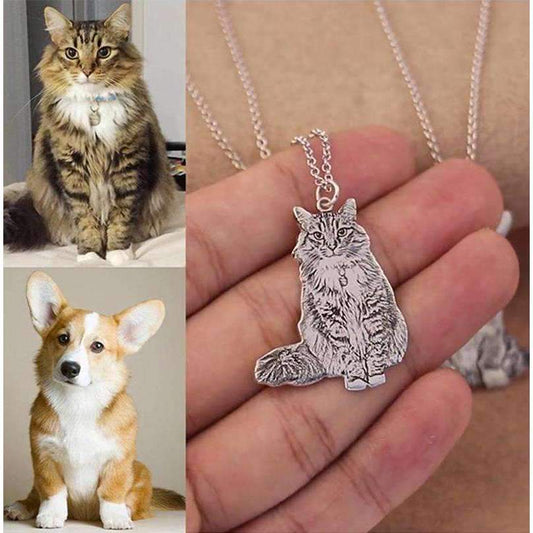Scratching is a natural and necessary behavior for cats, but it can wreak havoc on your furniture. With the right DIY scratching post, you can provide a satisfying outlet for your cat's instincts while saving your furniture from damage. This article will guide you through various creative and cost-effective DIY scratching post ideas that cater to your cat's needs and blend seamlessly with your home decor.
Key Takeaways
- A basic scratching post can be constructed easily with minimal carpentry skills, using affordable materials like sisal rope, fabric remnants, and wood.
- Eco-friendly scratching posts made from recycled materials not only save furniture but also contribute to reducing waste, making them a sustainable choice for eco-conscious cat owners.
- Stylish scratchers can be designed to complement your home decor, acting as both a functional piece for your cat and an aesthetic addition to your living space.
- Interactive scratchers with toys and movement elements provide mental and physical stimulation for cats, keeping them engaged and away from your furniture.
- Durability is key in DIY scratching posts; choosing the right materials and construction methods can ensure a long-lasting scratcher that remains attractive over time.
Crafting a Basic Scratching Post

Choosing the Right Materials
When embarking on the DIY journey of creating a scratching post for your feline friend, selecting the right materials is crucial. Cardboard is a popular and affordable material choice for cat scratching posts, offering several advantages for both cats and their owners. However, it's important to note that regardless of the material, there will be shreds to clean up. Sisal, another common material, can be sharper than cardboard, which might require additional cleanup efforts.
For those ready to tackle the project, here's a basic list of materials you'll need:
- Hammer
- Small nails (for fastening the rope to the post)
- Wood Post
- Flat square board for the base
- Scissors
- Sisal Rope
- Larger nails or screws
- Screwdriver or drill (optional, for securing the base)
- Garden gloves (to protect your hands during construction)
Remember, the durability of your DIY scratching post will largely depend on the quality of materials used. Opt for sturdy wood and high-grade sisal rope to ensure your creation withstands the test of time and claws.
Simple Construction Steps
Building your own scratching post can be a rewarding project, especially when you see your cat enjoying the fruits of your labor. Start by cutting the base and post to the desired size, ensuring stability and enough height for your cat to stretch fully. Attach the post to the base using screws or a strong adhesive for a secure hold.
Next, wrap the post with a durable material like sisal rope or carpet remnants. Begin at the bottom and work your way up, applying a layer of non-toxic glue as you go to keep the material in place. Remember to pull the material tight as you wrap to prevent any loose ends that could be pulled off by your cat.
Finally, give your creation a personal touch. Reflect the special bond between pet and owner by customizing the scratcher with colors and textures that match your cat's personality and preferences. A simple addition like a dangling toy or a soft platform on top can make the scratcher more appealing and enjoyable for your feline friend.
Customizing for Your Cat's Preferences
To create a scratching post that your cat will love, it's essential to discover your cat's preferences. Start by observing how your cat interacts with various toys and surfaces. Does she favor a particular material or size? This insight will guide you in choosing the right elements for your DIY project.
Cats have individual likes and dislikes, much like humans. Some may prefer a vertical surface to stretch and scratch, while others might opt for a horizontal layout to lounge and scratch. Consider the following aspects when customizing your scratching post:
- Texture: Sisal, carpet, or wood? Each cat has a texture preference.
- Height: Taller posts allow for full-body stretches.
- Stability: Ensure the base is sturdy to prevent tipping.
- Location: Place the scratcher in your cat's favorite area.
Remember, a scratching post tailored to your cat's unique preferences is more likely to be used and cherished, saving your furniture from unwanted scratches.
Finally, don't be afraid to experiment. If your cat doesn't take to the scratcher immediately, try adding catnip or dangling toys to entice her. With patience and observation, you'll create a personalized space that your feline friend can't resist.
Eco-Friendly and Upcycled Options

Using Recycled Materials
Embracing sustainability in your DIY projects not only benefits the environment but also adds a unique touch to your cat's scratching post. Using recycled materials can be both cost-effective and creative. For instance, an old cabinet from a thrift store can be transformed into a stylish and functional cat house with a built-in scratching area. While this may require tools like a jigsaw and a miter saw, the effort pays off in a personalized piece that's sure to be a hit with your feline friend.
Recycled materials aren't just for large projects; even smaller items can be repurposed. A scrap piece of wood, such as a deck post, can become the main pillar of a scratching post. If you're aiming for a more natural aesthetic, trimmed branches or small logs can serve as an eco-friendly scratching surface. However, ensure that the ends are smooth and level for secure fastening to the base.
When considering recycled materials, prioritize your cat's safety. Avoid using anything that could splinter, break, or contain harmful substances. It's essential to keep doors closed and use precautions like sticky tape to deter your cat from venturing outside, ensuring their indoor environment is both stimulating and secure.
Designs That Reduce Waste
Creating a scratching post that minimizes waste not only benefits the environment but also offers a satisfying challenge for the DIY enthusiast. By repurposing materials that would otherwise be discarded, you can craft a unique and functional piece for your feline friend. For instance, old wooden furniture can be transformed into a sturdy base, while leftover fabric scraps can be used to add a cozy touch.
Consider the following ideas to reduce waste in your DIY scratching post project:
- Utilize reclaimed wood or old furniture for the structure.
- Repurpose fabric scraps or old clothing for wrapping and padding.
- Use natural, biodegradable materials like sisal rope instead of synthetic options.
Emphasizing the importance of reflecting the bond between cat and owner, these eco-friendly scratchers can be personalized to suit your cat's preferences and your aesthetic sensibilities.
Remember, the goal is to create a scratcher that is both appealing to your cat and kind to the planet. With a little creativity, you can design a scratcher that meets both criteria and stands as a testament to your commitment to sustainability.
Maintaining an Eco-Friendly Scratcher
Maintaining an eco-friendly cat scratcher not only benefits the environment but also ensures a safe and healthy space for your feline friend. Regular cleaning is essential to prevent the buildup of dirt and to keep the scratcher appealing to your cat. Use natural, non-toxic cleaners to avoid introducing harmful chemicals into your cat's environment.
To extend the life of your eco-friendly scratcher, consider the following tips:
- Repair rather than replace. Fix loose parts or frayed surfaces as soon as they appear.
- Choose materials that are both durable and recyclable, like sisal or untreated wood.
- Rotate the scratcher's position to distribute wear evenly.
By taking proactive steps to care for your eco-friendly scratcher, you can minimize waste and maintain a sustainable product for your cat to enjoy.
Remember, an eco-friendly scratcher is not just about the materials it's made from, but also how you maintain it over time. With proper care, your scratcher can remain a beloved part of your cat's daily routine for years to come.
Stylish Scratchers to Complement Your Home

Selecting Aesthetic Materials
When creating a stylish scratcher, the visual appeal is just as important as functionality. Choose materials that not only withstand the test of cat claws but also blend seamlessly with your home decor. For instance, sisal and cardboard are popular for their durability and ease of shaping. However, sisal comes in various patterns and colors that can complement your interior design.
Consider the following materials for a scratcher that stands out by fitting in:
- Sisal fabric or rope
- Cardboard with attractive prints
- Wood for a sturdy base
- Felt or fabric wraps for a touch of elegance
Remember, the goal is to create a piece that serves as both a cat scratcher and a decorative element. Customize cat-themed accessories to celebrate the bond with your feline friend. A well-chosen basket or a cactus-shaped scratcher can become a conversation piece that reflects your personal style.
While aesthetics are key, don't forget the practical aspects. Place a mat underneath your scratcher to catch shreds and make cleaning up easier. This way, you maintain both the beauty and cleanliness of your space.
Integrating into Your Home Decor
Creating a scratching post that blends seamlessly with your home decor not only serves the functional purpose of saving your furniture but also adds to the aesthetic appeal of your living space. Choose materials and colors that complement your interior design, ensuring that the scratcher looks like a deliberate part of your home rather than an afterthought.
- Consider the color scheme of the room where the scratcher will be placed.
- Select fabrics and textures that match your furniture and curtains.
- Think about the overall style of your home; a modern scratcher for a contemporary space, or perhaps a rustic design for a country-style home.
When designing your cat's scratching post, remember that it should be both a practical tool for your pet and a harmonious addition to your home. The goal is to create a piece that satisfies your cat's needs while enhancing the beauty of your living space.
Finally, don't forget to measure the intended area for the scratcher to ensure a perfect fit. A well-integrated scratching post can double as a stylish piece of furniture, providing a unique talking point for guests and a beloved spot for your feline friend.
Scratching Posts as Furniture Protectors
Incorporating a scratching post as a furniture protector is a clever way to safeguard your beloved couches and chairs while catering to your cat's natural scratching instincts. By strategically placing scratching posts at the corners or sides of furniture, you can redirect your cat's attention away from the upholstery.
When selecting a scratching post for furniture protection, consider the aesthetics to ensure it blends seamlessly with your home decor. Opt for materials that complement your furniture, such as natural sisal or a color-matched fabric.
Here's a quick guide to the types of furniture protectors available:
- 'Sofa-Scratcher Squared' for couch corners
- Panther Armor Scratch Deterrent Tape for broad surface coverage
- Natural Sisal Furniture Protectors for a more organic look
Remember, the key to success is in the placement and material of the scratching post. Choose a spot that your cat frequents and a material that they find irresistible to scratch. This way, your furniture remains intact, and your cat stays happy and engaged.
Interactive Scratchers for Playful Felines

Incorporating Toys and Teasers
To keep your feline friend engaged and entertained, incorporating toys and teasers into your DIY scratching post is essential. Cats are natural hunters, and adding elements that stimulate this instinct can prevent boredom and promote healthy activity.
Here are some ideas to enhance your scratching post with playful accessories:
- Attach dangling toys at various heights to encourage jumping and climbing.
- Integrate tunnels or cubbies with hidden treats to spark curiosity.
- Use sisal rope or soft plush toys for them to swat and bite.
- Consider adding a spring-loaded rod with a toy at the end for an interactive experience.
While toys and teasers are a great addition, it's important to ensure they are securely attached and safe for your cat to play with. Regularly inspect the toys for wear and tear to avoid any potential hazards.
Remember, cats require attention to prevent destructive behavior. A well-designed scratching post with engaging toys can serve as a personalized gift for your cat, keeping them active and away from your furniture.
Designs for Active Cats
Active cats require stimulating environments to satisfy their need to climb, jump, and explore. Creating a multi-level scratching post with various platforms can provide an excellent outlet for their energy. Consider incorporating elements such as hanging toys or a sturdy base that allows for vigorous play without tipping over.
- Hanging toys or feathers
- Multiple platforms at different heights
- A sturdy base to prevent tipping
Ensuring your DIY scratcher can withstand the enthusiastic play of an active cat is crucial for both safety and longevity.
Remember that cat ownership expenses can be mitigated by investing in quality products that cater to your cat's needs, such as a well-designed scratcher. This can lead to a happier and healthier cat, ultimately saving costs on potential furniture damage or additional toys.
DIY Scratchers with Movement Elements
Cats are naturally drawn to objects that move, making DIY scratchers with movement elements a fantastic way to keep your feline friend engaged. By incorporating simple mechanisms or materials that sway or dangle, you can create a scratcher that not only satisfies their scratching needs but also stimulates their hunting instincts.
For example, attaching a jute-covered pole to a sturdy base and adding a hanging toy at the top can provide hours of entertainment. Ensure the base is wide and heavy enough to prevent the scratcher from tipping over during vigorous play.
When designing your scratcher, consider the placement of movement elements to encourage your cat to stretch and reach, promoting healthy exercise.
Here's a quick list of items you might need for a scratcher with movement elements:
- Wooden stool or plywood for the base
- Padding and fabric for comfort
- Jute or sisal rope for the scratching surface
- Boar bristle brushes for added texture
- Tools like a tape measure, scissors, hot glue gun, hand saw, and staple gun
Remember to regularly check the scratcher for any loose parts or signs of wear and tear. A well-maintained scratcher is a safe and enjoyable toy for your cat.
Maximizing Durability and Longevity

Choosing Durable Materials
When selecting materials for your DIY scratching post, durability should be a top priority. Sisal fabric is a popular choice among cat owners for its longevity and appeal to feline instincts. However, it's important to note that while sisal is durable, it can fray over time and may require replacement. Cardboard options, on the other hand, offer a different texture that cats enjoy, but their lifespan is highly dependent on the material's quality and construction.
For those seeking a balance between sturdiness and ease of maintenance, engineered wood or bamboo may be the ideal materials. These options not only withstand the test of time but also blend seamlessly with home decor. Consider the following table summarizing customer reviews on various scratching post materials:
| Material | Sturdiness | Durability | Easy to Assemble | Value for Money | Adhesion |
|---|---|---|---|---|---|
| Engineered Wood | 4.4 | 4.5 | 4.7 | 4.0 | — |
| Plastic | — | 4.8 | 3.6 | — | 3.8 |
| Bamboo | 4.3 | — | — | — | 3.5 |
While all scratchers will eventually need replacement, those with replaceable parts or multiple sides extend the life of your investment, allowing for targeted repairs rather than a complete overhaul.
Remember, the goal is to create a scratcher that can endure the enthusiastic clawing of your cat while also being a cost-effective solution in the long run. The right material not only saves you money but also spares your furniture from damage.
Tips for Long-Lasting Construction
To ensure your DIY scratching post stands the test of time, focus on quality workmanship and the right assembly techniques. A robust construction not only withstands the enthusiastic clawing of your feline friend but also saves you from frequent replacements.
- Use non-toxic, unfinished scrap wood for the base to provide stability and safety.
- Opt for heavy-duty glues and fasteners that are appropriate for the materials you're working with.
- Allow ample time for adhesives to dry completely before introducing the scratcher to your cat.
By investing in a high-quality scratching post from the start, you're less likely to deal with the aftermath of a quickly destroyed pad. This foresight prevents your cat from reverting to your furniture and ensures a mess-free home.
Remember, patience during construction pays off. The time spent waiting for glue to dry or meticulously sanding down rough edges contributes significantly to the durability of your homemade cat scratcher.
When to Replace or Repair Your Scratcher
Understanding when to replace or repair your scratcher is crucial for maintaining a happy and healthy environment for your feline friend. A well-maintained scratcher not only keeps your cat's claws in good shape but also helps in reducing allergens in your home through proper grooming tools.
Scratchers come in various materials, each with its own lifespan. Sisal and thick cardboard are popular choices that tend to last longer, but they will eventually wear out. Look for signs of excessive wear, such as fraying or pieces coming loose, which indicate it's time for a repair or replacement.
Regular inspection of your cat's scratcher is key. If you notice it leaning, becoming unstable, or if the base breaks, it's time to take action. A simple repair might involve replacing the base with a sturdier material like plywood and securing it with longer screws.
If you're faced with a scratcher that's beyond repair, consider investing in a new one with multiple sides or replaceable parts. This can extend the life of the scratcher and provide a cost-effective solution. Remember, a quality scratcher is an investment in your cat's well-being and your home's cleanliness.
Conclusion
In conclusion, creating a DIY scratching post is not only a fun and rewarding project, but it's also a practical solution to protect your furniture from your feline friend's natural scratching instincts. With a variety of materials and designs to choose from, you can build a scratching post that suits your cat's preferences and your home's aesthetic. Whether you opt for a simple design or something more elaborate, your cat will appreciate the dedicated space to stretch, scratch, and play. Remember, a little effort goes a long way in keeping both your cat happy and your furniture intact. So, roll up your sleeves, unleash your creativity, and give your cat the gift of a homemade scratching post!
Frequently Asked Questions
What are the best materials for a DIY scratching post?
The best materials for a DIY scratching post include sturdy bases like wood or heavy cardboard, and scratching surfaces such as sisal rope, sisal fabric, or carpet remnants. Choose materials that are durable and safe for your cat.
How can I make an eco-friendly scratching post?
To create an eco-friendly scratching post, use recycled materials such as old furniture, cardboard boxes, or natural fibers like sisal. Look for upcycled items that can be repurposed into a new scratcher, reducing waste.
How can I integrate a scratching post into my home decor?
Select materials and colors that complement your home's interior. Consider building a scratching post that doubles as a piece of furniture, like a side table or shelf, and use aesthetically pleasing fabrics or stains.
What features can I add to a scratching post to make it interactive for my cat?
Incorporate toys, teasers, or dangling objects to make the scratching post more engaging. Consider adding movement elements like springs or flexible parts that encourage play and scratching.
How can I ensure my scratching post is durable and lasts long?
Choose high-quality, durable materials and construct the scratching post with strong joins and adhesives. Regularly inspect it for wear and tear, and make repairs as needed to extend its lifespan.
When should I replace my cat's scratching post?
Replace your cat's scratching post when it becomes too worn out to be effective or safe. Signs of excessive wear include frayed materials, loose parts, or structural instability that could harm your cat.




